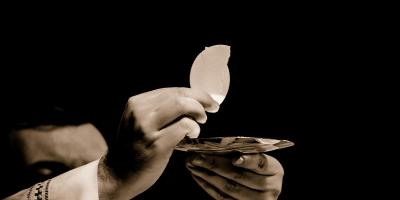Physiological jaundice in a newborn is not a disease. It is a disturbance connected with the infant’s adaptation to the new conditions. Jaundice in a neonate is indicated by yellowish skin, mucosa and eyes, drowsiness, and breastfeeding aversion.
This is a sign that the infant’s body is having initial problems with the transformation and excretion of bilirubin – a yellow substance produced from the breakdown of haemoglobin, a principal component of red blood cells. As a result the child’s body assumes a visibly yellowish hue – at first on the face and in more severe cases over the entire body, including hands and feet.
Physiological jaundice goes away without treatment
“We can speak of physiological jaundice if it appears after the first 24 hours of life and when the bilirubin concentration in the blood on the fourth day of life does not exceed 12mg/dL in healthy full-term infants and 15mg/dL in premature infants," said Marta Balicka, the Coordinator of the Neonatal Intensive Care Unit at Medicover Hospital in Warsaw.
The bilirubin level in neonates is performed in the hospital in a blood test or through the skin, by using a special device called bilirubin meter.
“Another criterion that allows the diagnosis of physiological jaundice is the spontaneous remission of symptoms – within 7 to 10 days in full-term infants and two weeks in premature infants," said the physician.
Breast milk jaundice
There is also a kind of jaundice related to breastfeeding. “In about 50 percent breastfed infants jaundice is more intensive – with bilirubin levels exceeding 15 mg/dL – and stays for up to more than ten weeks," explains Balicka.
According to the physician, this is caused by the ingredients of breast milk, which disturb the transformation of bilirubin, increasing its concentration in the blood.
This kind of jaundice usually goes away by itself, but follow-up tests of bilirubin need to be performed. If it stays too high, a physician can recommend a 48- to 72-hour break from breastfeeding. If the bilirubin level remains excessive, then other causes of continued jaundice must be sought.
When jaundice must be treated
Some neonates suffer from pathological jaundice, which necessitates treatment.
Pathological jaundice can be diagnosed when its onset is in the first 24 hours of life and lasts over two weeks.
“Infants whose bilirubin level is excessive and requires treatment are lethargic and reluctant to suckle," said Balicka.
She explained that the high level of bilirubin can be caused by e.g.: Rh incompatibility, intrauterine infections, bacterial infections, and perinatal asphyxia.
How to treat neonatal jaundice
Neonatal jaundice treatment involves reducing bilirubin levels in the blood. Phototherapy is the most common way to achieve this, as light causes bilirubin to break down and leave the system in urine.
Phototherapy sessions are performed in hospital. The infant, wearing only a diaper and special glasses covering its eyes is laid under a UV lamp.
During phototherapy every 12 to 24 hours the infant is tested for bilirubin concentration in the blood. After treatment is completed and the infant is discharged from hospital, parents are advised to report for follow-up tests and observe the child.









Comments (0)